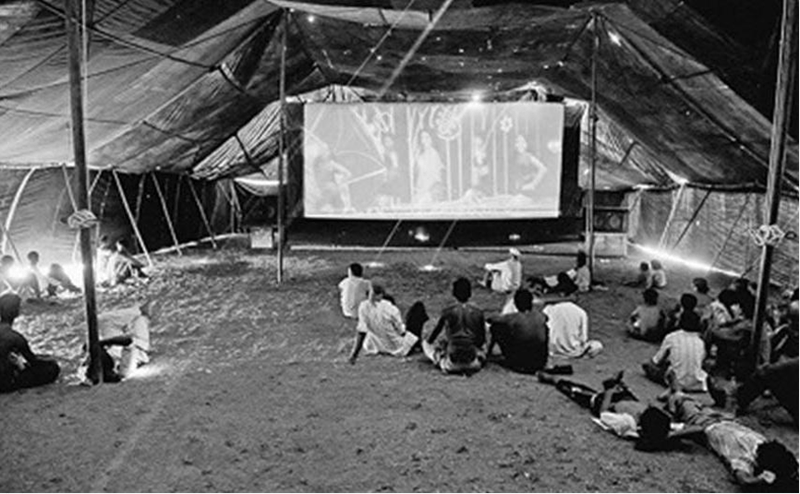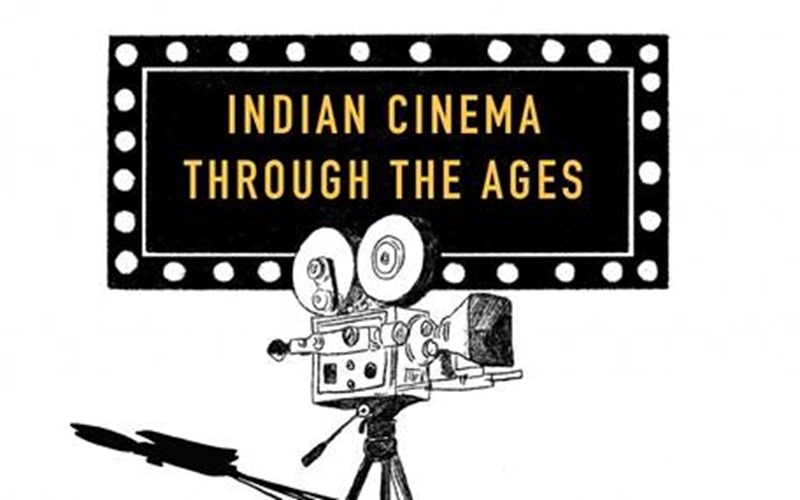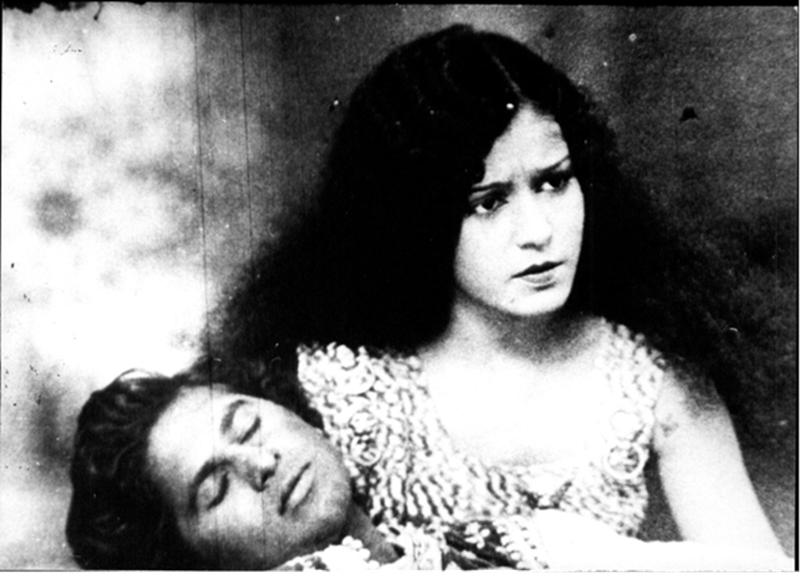Little remains of the thousands of silent features made in early-20th-century India. That doesn’t make the story of how they came to be – and why they disappeared – any less interesting.
This is the second article in a series on the history of the Indian film industry. Also read: Part I
If we were to trace the light that shone first with the screening of Lumiere brothers’ shorts at the Le Salon Indien du Grand Café in Paris on December 28, 1885, it would have lit up the globe like a galaxy of stars in a matter of days.
Within 12 months, the Lumiere Cinematograph was introduced by the Lumiere’s apostles of cinema, in Germany, the United Kingdom, the United States, India, China, Japan and Australia. At every stop, it attracted audiences, artists, inventors and entrepreneurs who would go on to pioneer the perpetuation of the moving image on screen in their respective countries. In Japan, for example, it was received as an extension to classical art forms like Kabuki, familiar stories, two-dimensional presentation, linear narration and pronounced expression. To comply with this tradition, intertitles were dispensed with and a Benshi introduced the subject to the audience. In China, it was inordinately influenced by the American technicians who stayed on, and yet, at other places like Germany, it was looked down upon as cheap entertainment at local fairgrounds.
Illustration: Pariplab Chakraborty
By 1905, just as the Lumiere brothers called time on the building craze for moving images, thinking of it to be a temporary fad, Jameshedji Framji Madan was just getting started. Madan imported a set of Pathe Frere’s films and was by then showing at a Maidan tent in Calcutta. He was not alone. Abdulally Esoofally and his team were travelling the sub-continent, across Ceylon, Awadh, Assam, Burma, Singapore, Sumatra and Java, setting up 100-ft-long tents, exhibiting moving images, often run-down, end-of-life versions of American or English silent films and newsreels, usually 15 to 20 minutes long, five to six films a show.
Madan finally set-up the Elphinstone Picture Palace in Calcutta, whereas Esoofally bought the Alexandra and Majestic theatres, in partnership with teacher-turned-cinema entrepreneur Ardeshir Irani. Madan then embarked on a spree through much of the 1910s and ‘20s, setting up “Elphinstone Picture Palaces” in Colombo, Rawalpindi, Simla and Rangoon, among other places.
Also read: Recording a Charming Song and Lata Mangeshkar’s Gesture of Generosity
With the onset of the First World War, a set of events conspired to add fire to the raging appetite for the moving image. The first was the increased spending on war supplies by the colonial government, the beneficiaries of which were mostly local businessmen in Bombay, Calcutta, Lahore and Delhi. Madan found himself at the epicentre of this windfall, established as he was as a supplier and agent to the colonial army. It allowed him the capital to spend on his love for the business of cinema. On his death in 1923, Madan Theatres owned 85 cinemas across the sub-continent. By 1931, this grew further into a group that ran 126 cinemas and employed 2,500 people.
It was an inspired run by the Parsi boy whose father had lost substantial sums in the Bombay land reclamation scam of 1865, an event that forced Madan to leave school to become a prop boy for his local Parsi theatre. He led the first vertically integrated enterprise that distributed, exhibited and produced films. Hundreds of them. If it were not for the double blow of the talkie and the great depression, Madan and his family would have been recognised today as the founding fathers of the film business. Instead, we have a street in Calcutta today to honour his presence.
The second contributing event was the stagnation in film production in countries like the UK, Germany and France, busy as they were sending their youngsters to Somme and Ypres to die for a greater cause. Having built the capacity in the form of maidan tents and theatres, the pioneers had to turn towards the vertically integrated studio system in the US, which was churning out silent features by the hundreds every year, to meet the demand. The Madans, Iranis and other theatre owners rushed to set up agency arrangements with American studios and thus brought Alf Valentino, Buster Keaton, Charlie Chaplin, Douglas Fairbanks, Mary Pickford and Norma Talmadge, to name a few, to the battered screens and tent cinemas of the Indian hinterland.
As the production of local silent features picked up pace, it also spawned homegrown varieties of Fairbanks in Master Vithal and others like Raja Sandow, Ruby Myers (Sulochana), Patience Cooper, Prithviraj Kapoor, Zubeida, Sohrab Mody and Lalita Pawar. The features from “Hollywood” were usually on their death runs and cost as little as Rs 3,000, exhibition and distribution rights included. To produce local movies, on the other hand, required an outlay of Rs 20,000, for a two-hour feature. The former was popular amongst the urbane audiences in Bombay, the latter was lapped up by the mill workers, and the town dwellers who shelled out an anna or less to sit on the floor or a bench, to watch familiar stories transmogrified from Parsi theatre, Rustom Sohrab, Alibaba and Forty Thieves, Gul-e-Bakawli, Aladin, Shirin Farhad, or mythological features like Raja Harishchandra, Abhimanyu, or naach gaana infused adaptations of Shakespeare’s plays, like Gorakhdhandha (Comedy of Errors) and Sher-dil (Othello). Irani, Madan, Baburao Painter, Dwarkadas Sampat, Chandulal Shah among others pioneered this phase, when features could be shot in eight weeks and exhibited at their own cinemas in time for popular festivals like Eid and Diwali. Between 1910 to 1931 around 1,700 silent films were made. Less than 30 survive today.
The silent films from this era that did survive the onslaught of time are the orientalist presentations by Indian Players and the Himanshu Rai-Niranjan Pal duo. While Ardeshir, Esoofally and Madan were setting up cinemas, their ultimate inheritors, led by Rai and Pal were busy with their plans to showcase the exotic in India to the English and European audiences. Thus came the translation of Light of Asia by Edwin Arnold into a silent feature, with intertitles in English, German, French and Urdu. Further collaborations with UFA in Germany and British Instructional Films yielded Shiraz, Throw of Dice and Karma all of which are available for viewing on YouTube today. With each feature, it became apparent to the industrious but ever hustling Rai and his high-strung, prodigious collaborator Pal, that their future lay not in capturing the imagination of the audiences in Europe, but in the madding crowds that rammed into the theatres owned by the Madans, Iranis and countless other early exhibitors that dotted the dusty plains of India.
Also read: Peter Bogdanovich Embodied an Era When Cinema Really Mattered
With the onset of the talkies, and with the moving images gaining a voice, Rai and his newlywed wife Devika Rani, together with Pal, would take different routes to end up in Bombay, together with their German collaborators like Frank Osten and Joseph Wirsching, to build Bombay Talkies.
Bombay Talkies was built over 19 acres of land in Malad. The studio had four sound stages, a dispensary, changing rooms for extras, a canteen, residential areas, a viewing theatre, ration shop, recreation room, processing room, the works. It took Rai and Indian players that voyage from Aldych to Malad, and influential collaborators like Chimanlal Setalvad, to produce some of the pathbreaking films of that time – Achut Kanya, Kismet and Jeevan Naiyya. Their films would give us the earliest generation of superstars like Ashok Kumar, Dilip Kumar and Raj Kapoor. It would give sustenance to filmmakers trained in a new idiom, like Bimal Roy, Sashadhar Mukherjee, Gyan Mukherjee and Kidar Sharma. It would give us script and scenario writers like Saadat Hassan Manto and K.A. Abbas.
Bombay Talkies and what remains of it exists today as a fire ravaged, encroached upon structure that history has decided to give a painful extended funeral. It does live a tad more prominently in folklore and heirlooms, with diligent storytellers taking pains to put together an era that is fast receding from memories.
Master Vithal, the Douglas Fairbanks of India, with Zubeidaa in ‘Alam Ara’.
Socio-political events influenced and forged the silent era and the commercial model that allowed distributors to import American films while catering to a wider audience through locally produced Indian silent features. It was Ardeshir Irani who, once again, landed this cosy burgeoning ecosystem the fatal right-uppercut. Irani happened to watch a part talkie feature called Show Boat in Excelsior cinema in 1929. With the release of The Jazz Singer in 1927, the first talkies had started filtering into the screens of Mumbai.
Lumiere’s galaxy of cinematic mini cultures littered around the world was once again being disrupted in major ways, 30 years later. The onset of talkies in Japan, for example, instigated a move away from the traditional dramatic form of cinematic expression, and the introduction of a modernist language for cinema, American in technique but local and contemporary in presentation. In China and Russia, the onset of talkies became a powerful tool for nationalism and political expression.
In India, this disruption manifested itself in the form of Irani’s Alam Ara, the first Indian talkie that was recorded with single-track sound on film. The script was an old Parsi theatre staple. The budget was twice that of a standard silent feature. The film pioneered the musical expression that became a standard for Indian talkies. It carried with it other portents too. For Master Vithal, Raja Sandow and Sulochana, it meant curtains on their careers because their diction could not hold up to the demands of the talkie era. For Madan Theatres, it meant the need to rapidly equip their 120-odd theatres with sound systems and proofing, which they could ill afford. For Ardeshir Irani, it ultimately meant another inspired run which ultimately concluded with the onset of the Second World War.
Also read: Enter the Smuggler: The Film Villains of the 1970s Reflected the Reality Off-Screen
The event that caused it all, Alam Ara, saw its negatives destroyed to strip silver from its nitrate base. There is a reason why few films from this era exist today. A lot of them were consumed by studio fires, given the tropical climate and lack of proper storage facilities. Others were burnt down with their studios, either through collusion to claim insurance money, or accidentally, due to the combustible nature of the material used for these films. Buffeted as it was by global events, it is difficult to say today, from the thousands of silent films made and lost during this period, whether some of them could have been cult or era defining, like for example, Fritz Lang’s Metropolis, Sergei Eisenstien’s Battleship Potemkin or Charlie Chaplin’s City Lights. If there ever was any that belonged to this category, it probably exists as silver, ashes or dust now, like the dreams of the pioneers.
The write up has referred extensively to literature produced on early silent films in India, the US and the UK. Credits are due to Indian Film by Erik Barnouw and S. Krishnaswamy, Debashree Mukherjee’s Bombay Hustle: Making Movies in a Colonial City and the Film Heritage Foundation, which has undertaken the painful task of restoring lost films of the silent and pre-war eras.
Manoj Kumar is an England-based information security specialist who moonlights as a blogger with interests in cybersecurity, pop culture, politics and films.



